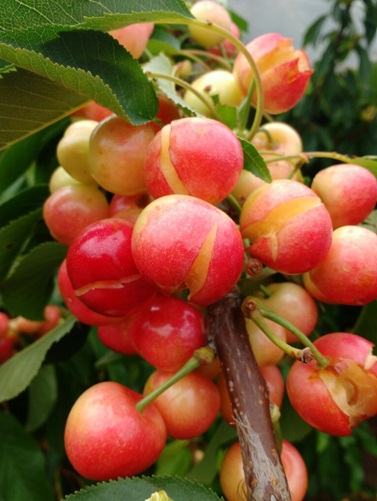Chilean cherry production affected by rainfall

While there are as yet no official figures as to what the heavy weekend rainfall in Chile's central-southern regions will mean for fruit production, preliminary reports indicate that cherries are the most severely affected crop.
Speaking with www.freshfruitportal.com, representatives of the Rosario Evaluation Center (CER) located in the central O'Higgins region estimated 15-30% of production in the region may be lost.
The O'Higgins region received around 20mm of rainfall over the weekend, with around 25mm falling in the mountain areas.
CER production researcher Catalina Atenas said the early varieties had received the most damage from splitting.
"The most affected cherry varieties have been Brooks, Royal Dawn and Santina. In those varieties we have seen the largest degree of damage," CER production researcher Catalina Atenas said.
Blueberries are another cause for concern, as the fruit had already set and the harvest date was nearing, but Atenas said any issues would likely be related to the potential development of diseases in the future.
As for table grapes, which are going through the flowering stage in the region, Atenas said she had not seen any vineyards yet, but believed there would be no direct impact on production.
Natalia Camus from CER's plant pathology laboratory warned that while cherries may appear unaffected from the rainfall, it was possible fungus may develop once the fruit has been packed.
Ivo Kurte, an independent advisor for cherries, grapes nectarines and pears, has been visiting two farms in the Metropolitan region and believed the rainfall could have more severe consequences than last year.
"I think that it is too early to quantify, but the rains have already caused damage, and in fact I think this year could ever be worse than the rains received during the previous season," he said.
 "We have seen some large splits in the fruit...especially for the early varieties. Last year, when we had had less rainfall to date in the season, we lost half of our production of the Brooks variety, and I think that this year we will see a similar result.
"We have seen some large splits in the fruit...especially for the early varieties. Last year, when we had had less rainfall to date in the season, we lost half of our production of the Brooks variety, and I think that this year we will see a similar result.
"Currently we are seeing around 30-40% loss on the early varieties."
Kurte also highlighted that none of the cherry production under plastic covers had been damaged.
Meanwhile, in the key growing region of Curicó, Quilvo Alto production and commercial manager Miguel Ángel Lorenzini said the company was still evaluating the impacts.
"We have quite a lot of damage for our early cherries and we were hoping to harvest around 3,000 kilos this week for our program with the Early Burlat cherries, but now everything has been lost," he said, adding most of the volumes for that variety were to be shipped to the U.S.
"We even think that the 30,000 kilos we were expecting to have for the program will now be only around 10,000 kilos.
"We still don't have the final results of the evaluation, but it definitely affected us and we are expecting to have some more climatic instability until at least mid-November."













































